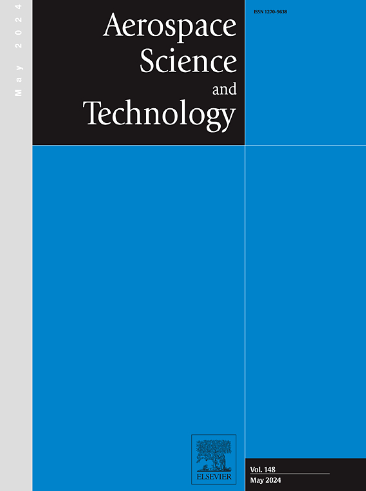压缩机级联转角分离/安装控制方法的评估策略
IF 5
1区 工程技术
Q1 ENGINEERING, AEROSPACE
引用次数: 0
摘要
现代涡轮机械的设计倾向于结合使用横扫、斜角和端壁处理方法来防止角流分离。然而,在选择最有效的端壁处理方法和评估其效率方面却鲜有规则可循。本文提出了一种基于扩散参数 DJ 的评估方法,用于评估影响端壁流场的两种现象。该方法包含两个模型:第一个是针对角部边界层交叉现象(B),第二个是针对端壁二次交叉流(E)。通过同时考虑 B 和 E,提出了 BE 规则。当 B-E>1 时会出现转角失速,B 和 E 的值可用来评估两种流动现象的严重程度。利用 BE 规则比较了四种端壁处理方法的控制效率。这四种端壁处理方法分别是端部斜面、混合叶片和端壁、端壁凹槽和端壁涡流发生器。在试验案例中,端壁二次交叉流的严重程度比边界层交叉流的严重程度更为严重。数值结果表明,端部斜面、混合叶片和端壁、端壁凹槽和端壁涡流发生器的控制效率分别为 23%、50%、34.6% 和 67.3%。本文章由计算机程序翻译,如有差异,请以英文原文为准。
An evaluation strategy of control method for corner separation/stall in compressor cascades
The modern design of turbomachinery tends to use a combination of the sweep, dihedral and endwall treatment methods to prevent the corner flow from separating. However, there are few rules for selecting the most effective endwall treatment methods and evaluating their efficiencies. In this paper, an evaluation method for the two phenomena that affect the endwall flow field is presented based on the diffusion parameter DJ. The method contains two models: the first is for the phenomenon of the boundary layer intersection in the corner (B), and the second is for the endwall secondary cross flow (E). The BE rule is presented by taking both B and E into account. The corner stall occurs when , and the value of B and E can be used to evaluate the severity of the two flow phenomena. The control efficiencies of the four kinds of endwall treatment methods are compared with one another using the BE rules. The four kinds of endwall treatment methods are end dihedral, blended blade and endwall, endwall grooves, and endwall vortex generators. The severity of the endwall secondary cross flow in the test case is more serious than the severity of the boundary layer intersection. The numerical results show that the control efficiency of the end dihedral, blended blade and endwall, endwall grooves, and endwall vortex generators are 23%, 50%, 34.6%, and 67.3%, respectively.
求助全文
通过发布文献求助,成功后即可免费获取论文全文。
去求助
来源期刊

Aerospace Science and Technology
工程技术-工程:宇航
CiteScore
10.30
自引率
28.60%
发文量
654
审稿时长
54 days
期刊介绍:
Aerospace Science and Technology publishes articles of outstanding scientific quality. Each article is reviewed by two referees. The journal welcomes papers from a wide range of countries. This journal publishes original papers, review articles and short communications related to all fields of aerospace research, fundamental and applied, potential applications of which are clearly related to:
• The design and the manufacture of aircraft, helicopters, missiles, launchers and satellites
• The control of their environment
• The study of various systems they are involved in, as supports or as targets.
Authors are invited to submit papers on new advances in the following topics to aerospace applications:
• Fluid dynamics
• Energetics and propulsion
• Materials and structures
• Flight mechanics
• Navigation, guidance and control
• Acoustics
• Optics
• Electromagnetism and radar
• Signal and image processing
• Information processing
• Data fusion
• Decision aid
• Human behaviour
• Robotics and intelligent systems
• Complex system engineering.
Etc.
 求助内容:
求助内容: 应助结果提醒方式:
应助结果提醒方式:


